Are you looking for ways to help feral cats during winter months? From outdoor cat houses for winter to keeping cat water dishes from freezing, there are many inexpensive ways to help protect feral cats during cold winter weather.
For feral cats, winter is no wonderland.
Winter temperatures stress outdoor pets and take a toll on homeless animals. We love feral cats; our dear Felix was a former feral, and ever since his adoption we’ve had a real soft spot for these cats who need our help, especially during the cold winter months.
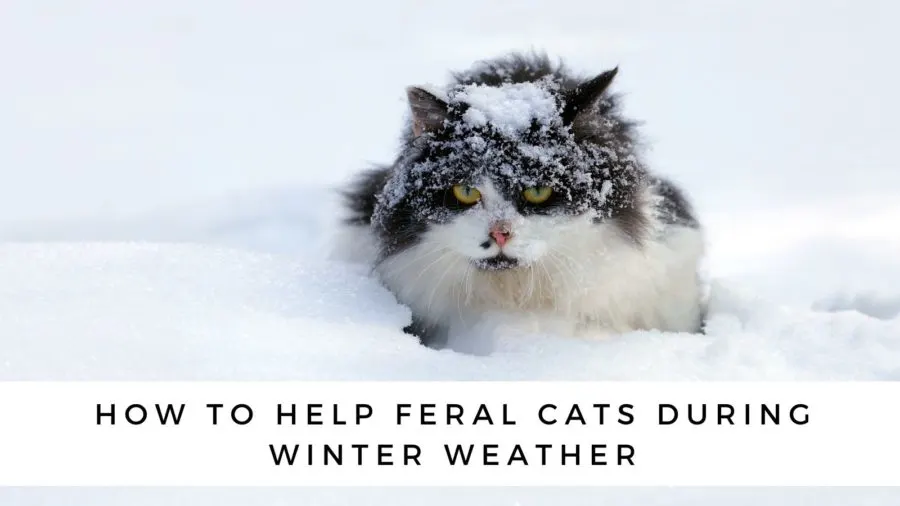
The Dangers of Winter Weather
Cold weather affects pets the same way it does people, said Dr. Christine Rutter, a clinical assistant professor at the Texas A&M College of Veterinary Medicine & Biomedical Sciences.
“The majority of cold weather related illnesses have to do with exposure to the cold itself,” Rutter said. “In some climates, generalized hypothermia and frostbite of toes, ears, lips, the nose, and the tail can certainly occur.”
She said that hypothermia may cause pets to seem mentally dull or antisocial while frostbite shows up as swollen, red lesions. Frostbite does not occur at a specific temperature, but rather results from a combination of cold weather, heat loss, and decreased blood flow.
According to Rutter, some pets are especially sensitive to cold weather, including older animals, newborn animals, underweight and small animals, and those with shaved fur.
Here’s a list of ideas for helping ferals weather the winter storms–and prepare for TNR efforts before kitten season arrives (it’s not as far away as it might seem!)
Provide shelter for feral cats.
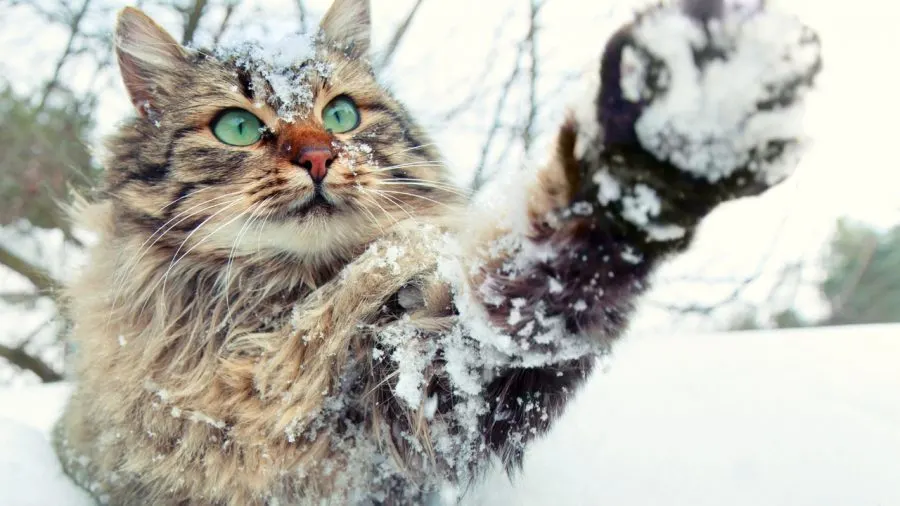
You can repurpose an old dog house as a warm retreat for feral cats. (Check sites like FreeCycle for free to pick up dog houses; sites like NextDoor and Craigslist can also be good options.)
The smaller dog houses are often the best so the cat can warm the space with body heat but any dog house will help provide shelter from snow and ice.
Plastic storage bins, weighted on top, can be lined with Styrofoam for insulation. (Neighborhood Cats offers easy, inexpensive designs for creating feral cat shelters.)
You’ll also find specially-made shelters for outdoor ferals.
Create your own low-cost cat shelters.
Alley Cat Allies notes that, while pre-built cat shelters can be purchased, for a low price cat lovers can keep kitties high and dry all winter long with a sanctuary made from a Styrofoam cooler that can easily be constructed in five minutes.
Even a slightly altered large storage tub can give our purring pals protection from frigid conditions. (Check out Alley Cat Allies’ shelter gallery for inspiration.)
To create wintertime accommodations for a cat colony:
- elevate the shelter off the ground.
- place the construction in a spot where it will be undisturbed.
- a good-size shelter offers space just big enough for three to five cats to huddle, although space should be limited if only one cat needs a place to stay.
- keep predators at bay by making the shelter door no larger than 6 to 8 inches wide.
- put a flap over the door to keep snow, rain and wind from getting inside.
Insulate the Shelter Against Moisture as Well as Cold
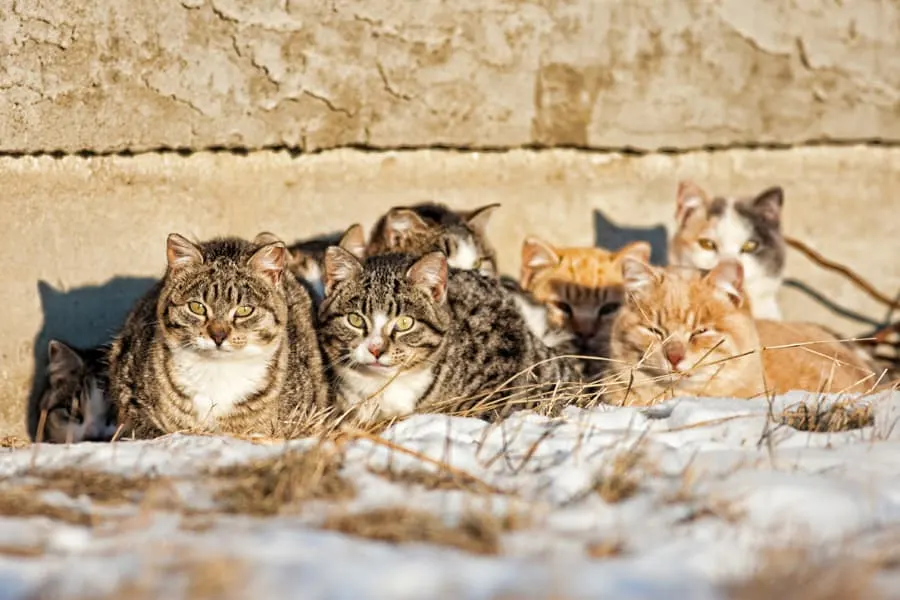
- Straw (not hay) provides both insulation from the chill and a comfortable spot for sleeping. Do not place blankets inside the shelter, as they absorb moisture like a sponge.
- If your garage or shed is acting as a shelter, take out dangerous antifreeze products, which are lethal when consumed. If the use of antifreeze products cannot be avoided, choose to use a less-toxic antifreeze made with propylene glycol rather than the highly toxic ethylene glycol.
Provide Fresh Water Daily and Additional Food
Those who have a hunger for helping community cats conquer the colder climes of wintertime should put out larger portions of food during extremely cold weather. While wet food in insulated containers is ideal, a heaping helping of dry food will also help to stave off dehydration.
To keep at cat’s meal and water from freezing at a fast rate, foam insulation can be applied to the hollow underside of a regular plastic feeding dish.
Alley Cat lies offers the following suggestions for preventing dehydration in an outdoor cat:
- keep water drinkable by placing bowls (which should be deep rather than wide) in an area that receives sunlight.
- Purchase heated electric bowls.
- Do not put out hot water, which actually freezes faster than cold water.
- Keep any entrances and exits to the cat’s shelter clear of snow to prevent the cat from getting snowed in.
It’s not an easy task to make sure that water bowls don’t freeze during the winter months. Specially made solar bowls like those made by Solar Sippers, are designed to use sunlight to prevent water bowls from freezing.
Other techniques include a pinch of sugar added to the water to lower the freezing point and placing the water bowl where it will receive morning sun to thaw it after a cold night.
Although you might think it’s a good idea to put the water in the shelter with the cats, you want to avoid that option since the bowl can easily be spilled, chilling the cats.
Offer extra food.
Cats need extra energy during the winter months to keep warm–and that means extra food. Wet cat foods can offer a nutritional boost and provide extra hydration (in case, after all your efforts, the water bowl winds up freezing overnight).
You can also add additional water to the canned food so you’ll know the cats will consume the water right away instead of waiting until it might be frozen hours later. Canned food is also more likely to be eaten soon–before it’s found by predators or wild birds.
Check community resources.
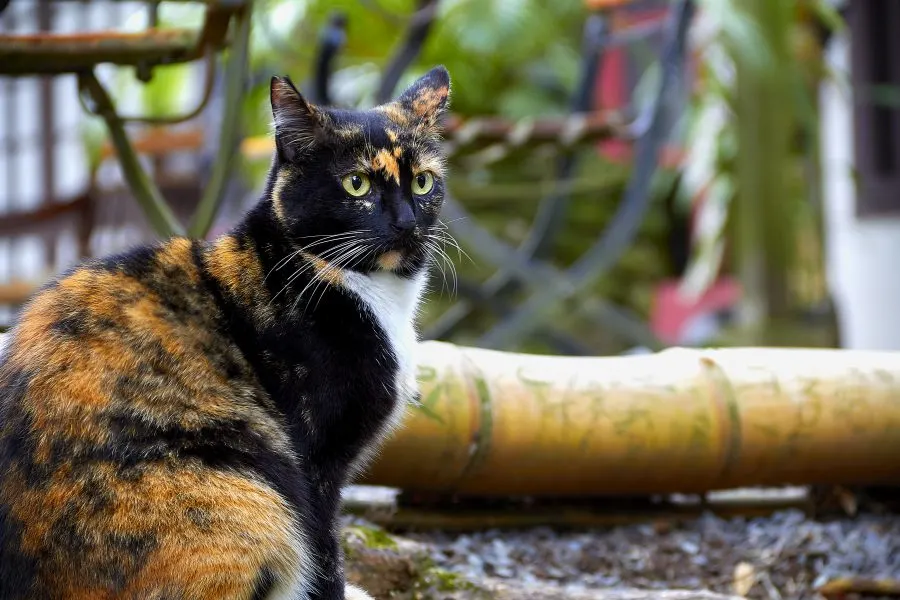
Does your local shelter offer Trap-Neuter-Return (TNR) clinics or have traps for loan? Does your shelter offer low-cost spay and neuter for feral cats?
Spay and neuter is the crucial key to managing a healthy colony of community cats so you’ll need this resource.
Set up a feeding and care schedule.
We all know cats like their routine and that includes feral cats. Set up a regular feeding schedule; the cats will learn when you’ll be coming to leave food and water.
When the time comes to trap the cats to take them in for spay and neuter, your job of catching the cats will be much easier with this schedule in place.
Talk with neighbors.
Community cat colonies can be a touchy subject but you’ll want those living near the cat colony to understand what you’re doing and why it will benefit not only the cats but the neighborhood, too.
Your care will help maintain a healthy colony and reduce the number of kittens through TNR. You also might receive offers of help as you talk with neighbors!
Download the free Neighborhood Cats TNR Handbook.
This 160-page guide walks you through the TNR process with special sections on equipment, caring for feral cats during the winter months, socializing feral kittens, and more. You’ll also find excellent sections on how to talk with neighbors and city officials about community cats.
Check Your Car Before You Drive
Before turning on the ignition, knock on the hood of your car to make sure that your vehicle isn’t concealing any temporary residents, as cats are known to crawl into the engine or hide beneath a car for warmth. Also, do not forget to keep antifreeze out of the reach of cats and other animals!
With an estimated 50 million feral cats in the US alone, a huge need for feral cat colony caregivers exists. Feral cats depend on the kindness and help of animal lovers to help them live out their lives in a happy, healthy way, whether that means in a community or, for younger cats that can potentially be socialized like our Felix was, in a forever home.
Pin it to remember how to help feral cats during winter weather!
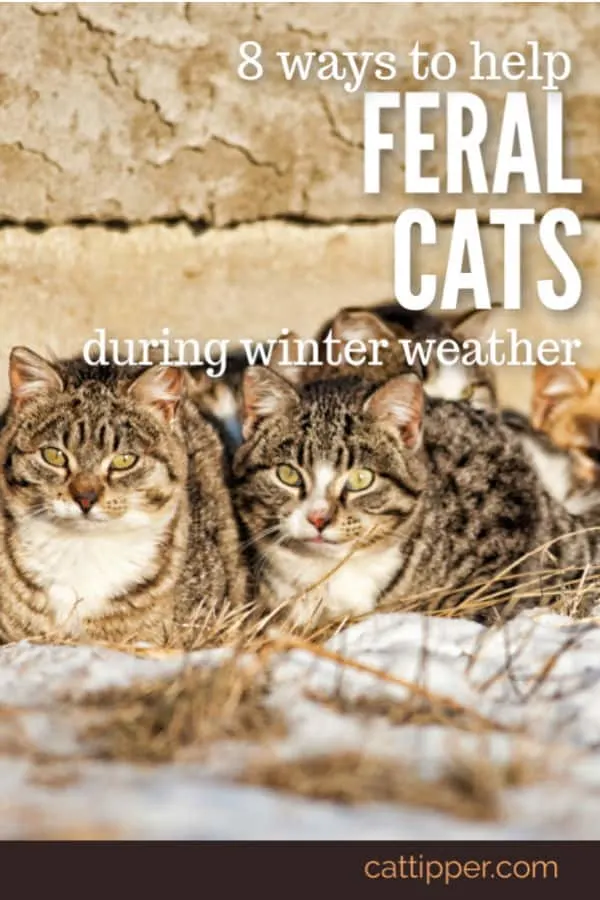
- Are Eclipses Dangerous to Cats? - March 4, 2024
- 80 Names for Cats with Spots and Speckles - March 3, 2024
- Free Printable Cat Valentine Coloring Pages - January 31, 2024
